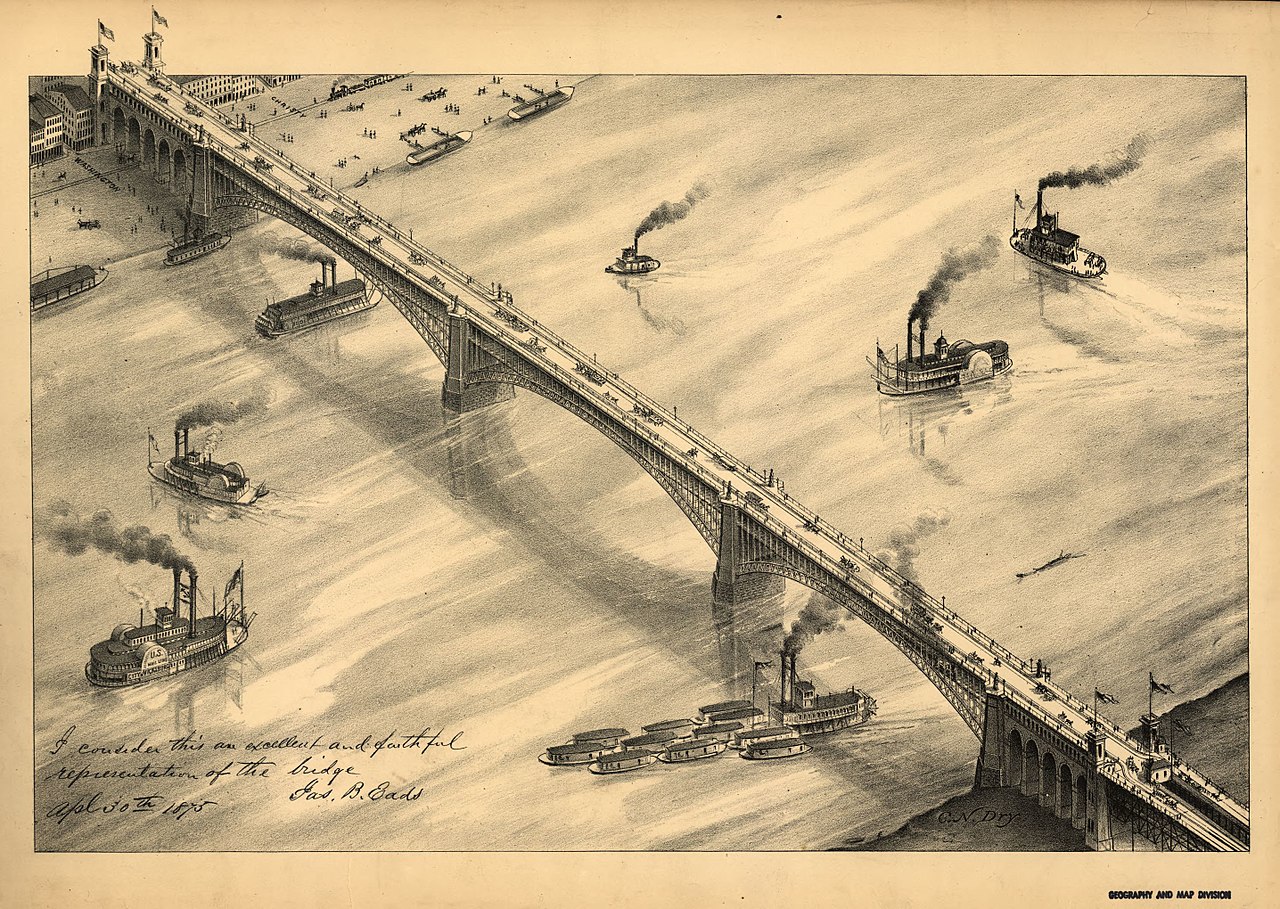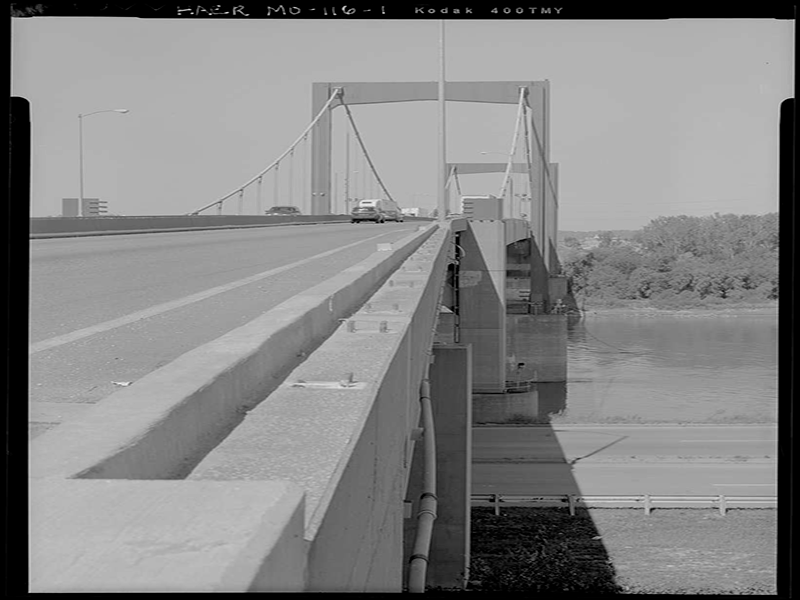A Worker on the Eads Bridge Dies of The Bends: March 19, 1870

James Moran, born in Ireland, became one of the first documented people in history to die of decompression sickness, or the bends on this date in 1870. Moran was a worker on the Eads Bridge, the first bridge to be constructed over the Mississippi south of its confluence with the Missouri. Because the bridge’s support piers had to reach the riverbed of the Mississippi, workers were required to dive deep beneath the water in caissons, some of the deepest ever sunk. The piers had to be built atop bedrock nearly 78 feet below the sandy river bottom. Surfacing from the depths of the caissons too quickly caused several workers to fall victim to decompression sickness. After studies were released regarding these workers and others working on the Brooklyn Bridge in New York, the disease became known as Caisson Sickness.
Decompression sickness is a medical condition that can occur when divers, aviators, or workers in pressurized environments ascend too quickly. It happens because nitrogen gas, which is dissolved in the body’s tissues under high pressure, forms bubbles in the bloodstream and tissues when the pressure is reduced too rapidly. These bubbles can block blood vessels and disrupt blood flow, leading to a range of symptoms from joint pain and skin rashes to paralysis and even death. The condition can be fatal if critical organs such as the brain or heart are affected, leading to stroke, heart failure, or other life-threatening complications. It’s crucial for individuals exposed to changes in pressure to ascend slowly and follow proper decompression procedures to prevent this dangerous condition.
At the time the Eads Bridge was erected, this condition was little understood, and 77 workers on the bridge fell ill from it with fifteen dying, Moran among them. Moran and at least four other workers were eventually subject to post mortem examinations, which revealed abnormalities especially in the heart and brain. Eventually treatments were developed which reduced the fatal effects of the disease. It is believed that the St. Louis cases was the first instance where the condition was referred to as “the bends,” a references to a popular dance move at the time called the “Grecian Bend,” in which the dancer stooped at the waist. Apparently, decompression sickness caused its victims to adopt the same posture.
Related Posts
Paseo Bridge Closed
On November 19, 2010 the old Paseo Bridge in K.C. was closed in favor of its new replacement.
April 29, 1870
A new ordinance declared that dancing was prohibited in the Jefferson County Courtroom.
March 26, 1870
On this day, Lemma Barkaloo was admitted to the Missouri Bar and became the first woman to practice law in the state. However, she died a few months later from of typhoid fever.



